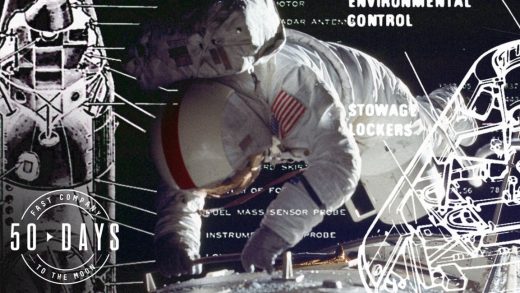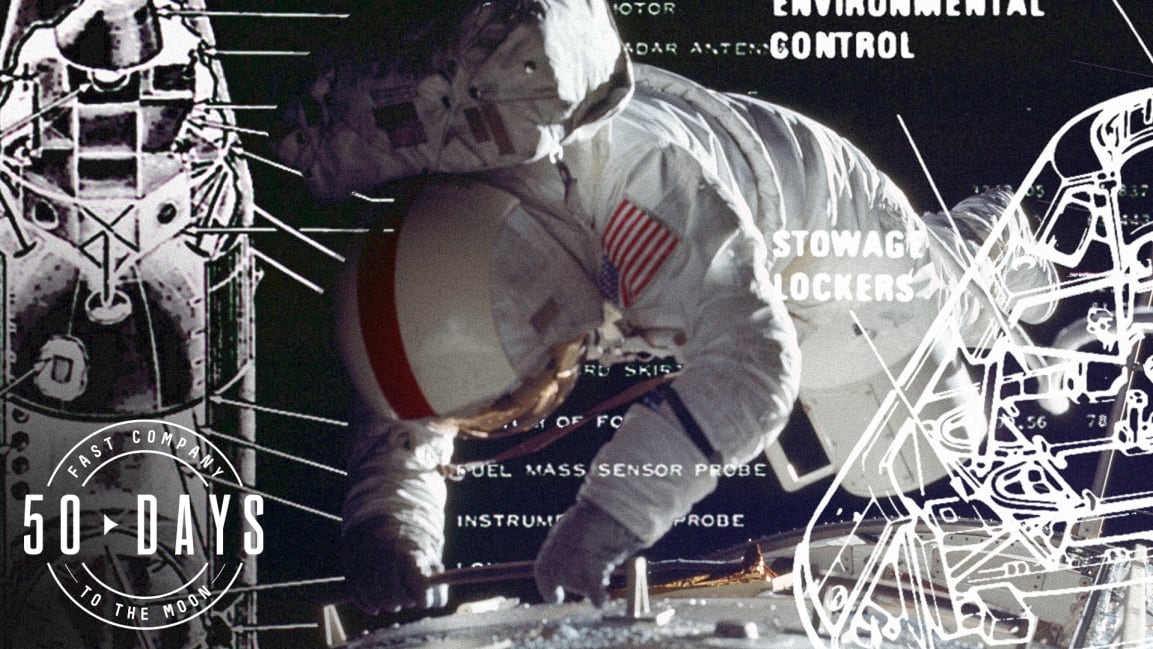Astronauts were going to fix the spaceships while they flew them
This is the 29th in an exclusive series of 50 articles, one published each day until July 20, exploring the 50th anniversary of the first-ever Moon landing. You can check out 50 Days to the Moon here every day.
In the early days of planning to fly American astronauts to the Moon, a central worry was how to make the spacecraft—and all the equipment the astronauts would depend on—reliable.
One early plan: Don’t worry about it so much.
Just pack a lot of spare parts, some carefully designed tool kits, and train the astronauts on how to repair their own spaceships in case something failed while they were en route.
This idea was serious enough, and stayed in the Apollo planning process long enough, that it was dignified with an Apollo-era NASA acronym: IFR. In-flight repair.
In-flight repair posed a host of problems, which NASA seemed slow to confront.
Every element of the Apollo spacecraft—Saturn rocket, command module, lunar module—suffered from weight problems. Which is to say, everyone wanted to take more into space than the Saturn V could launch—a more robust spacecraft, more equipment, more experiments, and even more fuel to help with safety margins at the Moon.
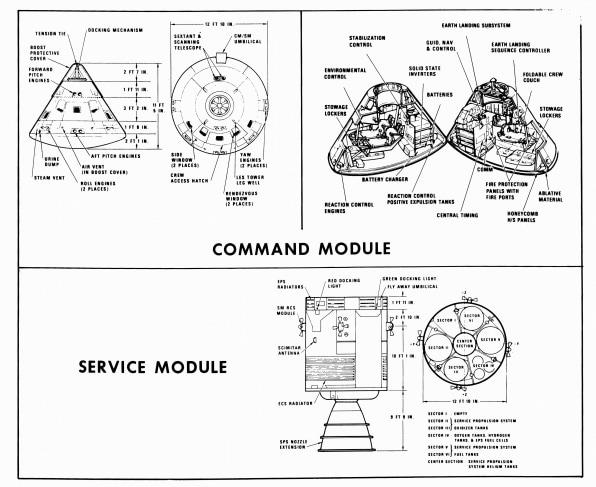
Weight would ultimately become such a problem that parts of the lunar module that were not load-bearing structures would be milled as thin as possible, because every gram mattered. The lunar module itself would only carry two minutes of extra fuel for the actual Moon landing. The astronauts flew 240,000 miles to the Moon, but when they got within 2,000 feet of landing, they only had 120 extra seconds of fuel if they needed a new landing spot or something went wrong. Why? Because to take a pound of fuel all the way to the Moon required three extra pounds of fuel on the launch pad—which is to say, every pound of fuel for a Moon landing was really four pounds of fuel. During the height of the lunar module’s weight-cutting efforts, Grumman, the company making the lunar module, set a standard: It was willing to spend up to $10,000 to cut a single pound of weight.
So the idea that the spacecraft would head to the Moon loaded with tools and spare parts ultimately came to seem ridiculous.
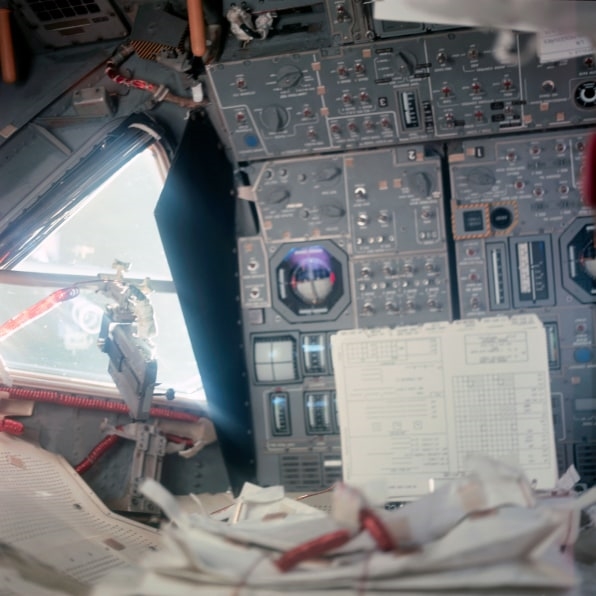
But the concept hung on so long that it became a different kind of problem: If you expect the astronauts to be able to repair key components in flight, you have to design the entire spaceship differently than if only skilled, Earth-based technicians are working on it. You need access panels. You need the replaceable parts to be easy to get to. You need connectors of all kinds—mechanical, electrical, plumbing—to be easy for astronauts to disconnect and reconnect. All those design decisions themselves add weight. They also cascade through the rest of a spaceship’s design.
One supplier specified that astronauts be equipped with a soldering iron for proper repair of its equipment, although how exactly zero-gravity soldering would work, with molten balls of hot metal floating inside the spaceship, wasn’t clear.
In-flight repair was a singular instance of persistent naïveté about spaceflight on the part of NASA.
Thomas Kelly, chief designer and chief engineer for the lunar module at Grumman, argued forcefully to NASA that in-flight repair made the reliability challenge worse, not better. Making all critical systems accessible to repair, making the mechanical and electronic connections easy to unhook in flight, installing a whole layer of sensors and electronics to detect exactly what components had failed—all that made any particular component more likely to fail—and also created more possibilities for failure—some of them simply failure warning systems.
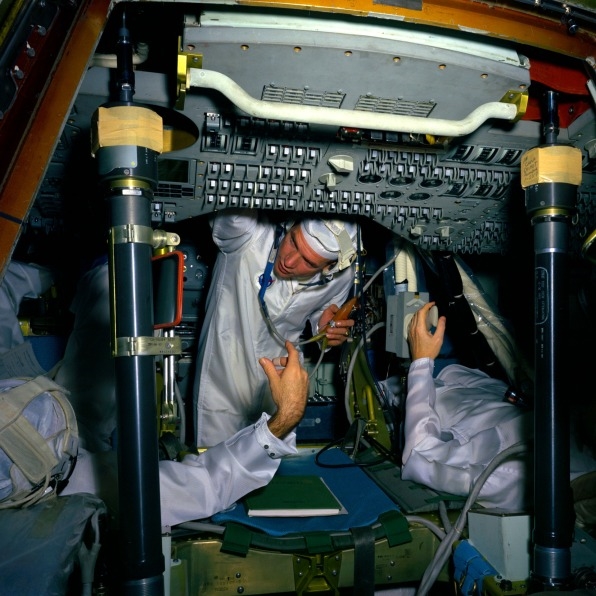
[Photo: NASA]
A carefully built spacecraft, Kelly argued, with connections secure and wiring and controls sealed against the hazards of humidity and zero gravity, was a much better path to reliability. NASA was ultimately persuaded: The requirement for in-fight repair was eliminated in 1964.
The astronauts, for their part, knew from the beginning that IFR was not just inconvenient and unwieldy but also impossible. They could barely master what they had to for the missions themselves without having to learn how to fix some of the most sophisticated aviation equipment ever created, equipment that was assembled, tested, and maintained by armies of thousands of skilled technicians and factory workers on the ground.
The topic came up during one of John Glenn and Alan Shepard’s early visits to MIT to discuss the design of Apollo’s computers. Glenn didn’t end up flying any Apollo missions, but Shepard commanded Apollo 14. At MIT that day there was discussion of how to diagnose computer failures and what swapping out computer memory modules would be like in space.
Having listened to what in-flight computer repair would be like, Shepard said to the MIT engineers, “Yeah, and we should all train to be brain surgeons so we can operate on each other.”
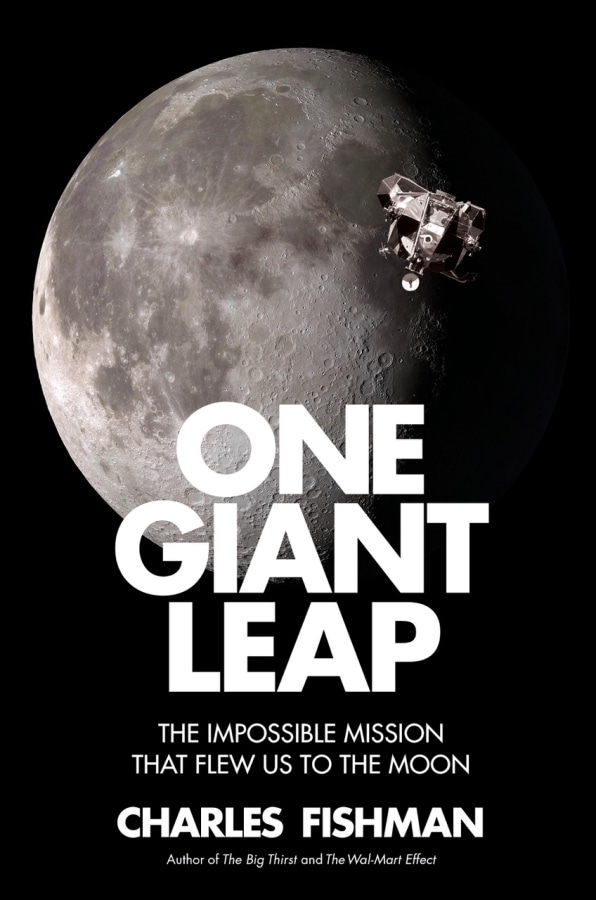
Charles Fishman, who has written for Fast Company since its inception, has spent the past four years researching and writing One Giant Leap, his New York Times best-selling book about how it took 400,000 people, 20,000 companies, and one federal government to get 27 people to the Moon. (You can order it here.)
For each of the next 50 days, we’ll be posting a new story from Fishman—one you’ve likely never heard before—about the first effort to get to the Moon that illuminates both the historical effort and the current ones. New posts will appear here daily as well as be distributed via Fast Company’s social media. (Follow along at #50DaysToTheMoon).
(38)

